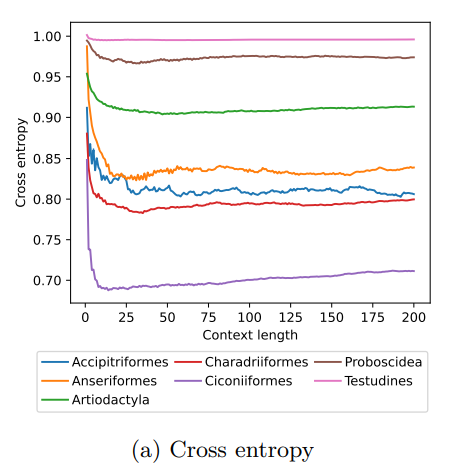
DAVIDSON Jacob
Recommendations: 0
Review: 1
Review: 1

MoveFormer: a Transformer-based model for step-selection animal movement modelling
A deep learning model to unlock secrets of animal movement and behaviour
Recommended by Cédric Sueur based on reviews by Jacob Davidson and 1 anonymous reviewerThe study of animal movement is essential for understanding their behaviour and how ecological or global changes impact their routines [1]. Recent technological advancements have improved the collection of movement data [2], but limited statistical tools have hindered the analysis of such data [3–5]. Animal movement is influenced not only by environmental factors but also by internal knowledge and memory, which are challenging to observe directly [6,7]. Routine movement behaviours and the incorporation of memory into models remain understudied.
Researchers have developed ‘MoveFormer’ [8], a deep learning-based model that predicts future movements based on past context, addressing these challenges and offering insights into the importance of different context lengths and information types. The model has been applied to a dataset of over 1,550 trajectories from various species, and the authors have made the MoveFormer source code available for further research.
Inspired by the step-selection framework and efforts to quantify uncertainty in movement predictions, MoveFormer leverages deep learning, specifically the Transformer architecture, to encode trajectories and understand how past movements influence current and future ones – a critical question in movement ecology. The results indicate that integrating information from a few days to two or three weeks before the movement enhances predictions. The model also accounts for environmental predictors and offers insights into the factors influencing animal movements.
Its potential impact extends to conservation, comparative analyses, and the generalisation of uncertainty-handling methods beyond ecology, with open-source code fostering collaboration and innovation in various scientific domains. Indeed, this method could be applied to analyse other kinds of movements, such as arm movements during tool use [9], pen movements, or eye movements during drawing [10], to better understand anticipation in actions and their intentionality.
References
1. Méndez, V.; Campos, D.; Bartumeus, F. Stochastic Foundations in Movement Ecology: Anomalous Diffusion, Front Propagation and Random Searches; Springer Series in Synergetics; Springer: Berlin, Heidelberg, 2014; ISBN 978-3-642-39009-8.
https://doi.org/10.1007/978-3-642-39010-4
2. Fehlmann, G.; King, A.J. Bio-Logging. Curr. Biol. 2016, 26, R830-R831.
https://doi.org/10.1016/j.cub.2016.05.033
3. Jacoby, D.M.; Freeman, R. Emerging Network-Based Tools in Movement Ecology. Trends Ecol. Evol. 2016, 31, 301-314.
https://doi.org/10.1016/j.tree.2016.01.011
4. Michelot, T.; Langrock, R.; Patterson, T.A. moveHMM: An R Package for the Statistical Modelling of Animal Movement Data Using Hidden Markov Models. Methods Ecol. Evol. 2016, 7, 1308-1315.
https://doi.org/10.1111/2041-210X.12578
5. Wang, G. Machine Learning for Inferring Animal Behavior from Location and Movement Data. Ecol. Inform. 2019, 49, 69-76.
https://doi.org/10.1016/j.ecoinf.2018.12.002
6. Noser, R.; Byrne, R.W. Change Point Analysis of Travel Routes Reveals Novel Insights into Foraging Strategies and Cognitive Maps of Wild Baboons. Am. J. Primatol. 2014, 76, 399-409.
https://doi.org/10.1002/ajp.22181
7. Fagan, W.F.; Lewis, M.A.; Auger‐Méthé, M.; Avgar, T.; Benhamou, S.; Breed, G.; LaDage, L.; Schlägel, U.E.; Tang, W.; Papastamatiou, Y.P. Spatial Memory and Animal Movement. Ecol. Lett. 2013, 16, 1316-1329.
https://doi.org/10.1111/ele.12165
8. Cífka, O.; Chamaillé-Jammes, S.; Liutkus, A. MoveFormer: A Transformer-Based Model for Step-Selection Animal Movement Modelling. bioRxiv 2023, ver. 4 peer-reviewed and recommended by Peer Community in Ecology.
https://doi.org/10.1101/2023.03.05.531080
9. Ardoin, T.; Sueur, C. Automatic Identification of Stone-Handling Behaviour in Japanese Macaques Using LabGym Artificial Intelligence. 2023, https://doi.org/10.13140/RG.2.2.30465.02402
10. Martinet, L.; Pelé, M. Drawing in Nonhuman Primates: What We Know and What Remains to Be Investigated. J. Comp. Psychol. Wash. DC 1983 2021, 135, 176-184, doi:10.1037/com0000251.
https://doi.org/10.1037/com0000251